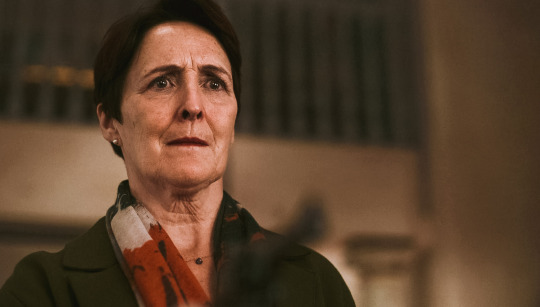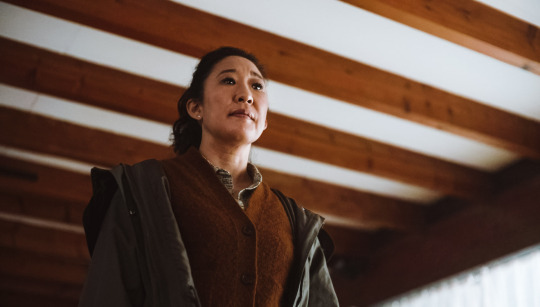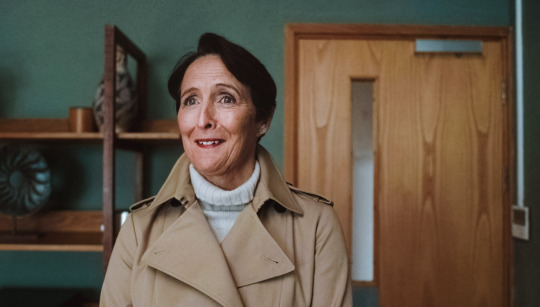#metafore narrative
Explore tagged Tumblr posts
Text
Fuori dall’uovo di Luca Volta: Un viaggio nel labirinto delle emozioni. Recensione di Alessandria tday
Un racconto che intreccia crescita personale, simbolismo e la ricerca della propria identità.
Un racconto che intreccia crescita personale, simbolismo e la ricerca della propria identità. Introduzione:Con Fuori dall’uovo, Luca Volta ci conduce in un’avventura narrativa che esplora il significato della crescita personale e della scoperta di sé stessi. Questo racconto originale, impreziosito da un forte simbolismo, invita i lettori a riflettere sui percorsi tortuosi della vita e sulle…
#Alessandria today#Autore emergente#Crescita Interiore#Crescita Personale#Emozioni#Esperienze emotive#Fuori dall’uovo#Google News#introspezione#italianewsmedia.com#labirinto della vita#labirinto simbolico#lettura emozionante#Letture consigliate#Letture ispiratrici#letture profonde#Luca Volta#metafore narrative#Narrativa breve#narrativa contemporanea#narrativa d’autore#narrativa filosofica#narrativa italiana#narrativa moderna#narrativa simbolica#percorso personale#Pier Carlo Lava#romanzi originali#romanzo d’introspezione#romanzo di formazione
0 notes
Text
I just heard that half-orcs and half-elves no longer exist in the new books and i am kinda sad about it. Is mostly because my first (and shamelessly favorite) D&D character is a half-elf. But also i think those half-somethings are a intresting metafor for biracial or bicultural children.
You had the option of making a character more linked to one side of their ascendency slowly conecting to the other or a character who's perception of the world is molded by both parents cultures or even a character who admires both cultures but feel like they don't truly belong to any of them.
I think those were a lot of intresting things to explore in those types of characters. I hope in the new books they give some alternative for players who may want to build characters with those narratives in the new mechanics.
I also would like to know, what do you guys think of this change ? Do you like or dislike half-orcs and half-elves ?
#dnd#dungeonsanddragons#dnd5e#dnd new books#half orc#half elf#dnd characters#dnd character build#i really like half orcs and half elves
3 notes
·
View notes
Text
Ersher Burakh who was Artemy Burakhs brother was one day in the capitol cutting into a cadaver. He got a letter from his brother that said that plague and bandits were attacking his place and aksed him for help so he went.
Ersher Burakh got his cadaver shut down and wet up the stairs to get up the roof of the building where he left his reitwagen and normal people close because he was in his sturgeons gown. Ersher Burakh got on his motorcycl and said “it’s time for me to live up to my family name and face full life consequences” so he had to go.
Ersher Burakh ramped off the building and did a backflip and landed. He kept riding down the tracks and made sure there was no plague around because he did not have tincture.
The countrysides were nice and the grass was singing and the crows and the sun were almost down from the top of the sky. the mood was set for Ersher Burakhs quest to help his brother were he was. Ersher Burakh looked around the step and said “its a good day to do what has to be done by me to help my brother defeat the enemies.”
Ersher Burakh was late so he had to jump onto train to get there really fast. A coffin was hidden near so when Ersher Burakh went by a man crawled out and wanted to give him a deal. Here Ersher Burakh saw the first decision-driven consequence because the traveler was death and had a undesirable ending.
“I can’t give you my deal fellow traveler” Ersher Burakh said
“Why not?” said the fellow traveler back to Ersher Burakh.
“Because you are metafor for the inevitable of death” so Ersher Burakh shot the travelor in the head and got off the train thinking “my brother is in trouble there” and went faster.
Ersher Burakh had to go faster like the speed of sound and got there fast because Artemy needed him where he was. Ersher Burakh looked at the town signs and saw “Town-On-Gorkhon” with someons writing under it saying “ur hated here” and Ersher Burakh almost turned around but heard screaming like Artemy so he went faster again.
Ersher Burakh drove in and did another flip n jumped off his motorbike and the motor bike took out some arsonists in front of Ersher Burakh. Ersher Burakh smiled and walked fast. Ersher Burakh then looked at the ground and found tinctor so he pickd it up and threw fast at infected peaple in front of a house.
Ersher Burakh said “infected peaple leave this place” and the infected said “but this is our house” and Ersher Burakh felt sorry for them because they couldn’t live there anymore but they were infected so he blew up the house and killed the infected peaple so they were at piece.
Then Ersher Burakh heard another scream from his brother so he kept walking really faster to get where he was. Town-On-Gorkhon was nothing like the countrysides there was no crows singing and the tire were dead and the healers were argueing and teh dirt was messy and bloody from plague.
When Ersher Burakh got to where the screaming was started he found his brother Artemy Burakh fightin the polyhedronnn and Artemy said “Ersher Burakh! Over here!” so Ersher Burakh went there to where Artemy Burakh was fighting. Ersher Burakh fired his bullet from blocks cannon and the bullets went and shot the polyhedron in the tower and Simon’s goast couldnt see.
Artemy Burakh said “its time to ends this once and for all!” and punched the polyhedron in the blueprints and the polyhedron fell. Ersher Burakh said “thanks i could help, bro” and Artemy Burakh said “you should have come here earlier next time” and they stared at each other.
The stared over quickly though because Ersher Burakh yelled “LOOK OUT BRO!” and pointed up to the top of the sky. Artemy Burakh looked up and said “NOO! Ersher Burakh run out of here as fast as you can!” and Ersher Burakh walked really fast out.
Ersher Burakh looked back and saw Artemy Burakh get steppe’d on by the meta narrative and he was mad and angry.
“I’ll get you back evil makers!” Ersher Burakh yelled at the top of lungs.
to be continued…?
#pathologic 2#pathologic#ersher burakh#artemy burakh#half life full life consequences#my writing#for my next Patho fic I wanted to take some inspiration from classic literature#a.k.a. this is what happens when I wake up too early in the morning
15 notes
·
View notes
Text
Introducing Fred Zacaria of Acap Rome.

- "Truth Is Stranger Than Fiction!" (Mark Twain)
-"Imagination Is More Important
Than Knowledge!"
(Albert Einstein)
______________________
Disclaimer:
This work is classified as dystopian fiction in the fields of
science, politics, religion; it uses metafors and allegorical novellas.
Any similarity to circumstances or actual persons living or dead is purely coincidental.
Fred Zacaria born in 1959, studied at the University of Rome, is the founder since 2001 of "Acap", Associazione Cristiana Aiuto Pratico", a charitable mission helping the needy with free: food, clothing, courses, and mainly now domestic jobs, tens of thousands of families and persons found jobs through the mission. Various Acap prayer groups were formed in asian countries, combining pratical help with spiritual councelling.
He also ran 4 prayer halls in Rome open to the public all year round from 2001 till 2017, they were prayer and Bible preaching with daily practical help, the activity is momentarily online (smart working) and we pray to open soon another prayer hall if we find sponsors. Between 2005 and 2017 many groups were formed in Asia (7 in the Philippines, 1 in Thailand, 1 in Nepal). Street meetings and house prayer groups were/are formed in Rome from 2017 to present, compatibly with sanitary rules and regulations.
He was a public orator speaking in italian churches and travelling Italy from north to south in the nineties, he stopped trabelling due to founding Acap in 2001 and getting very busy with his own mission. He read the equivalent of hundreds of books on many different subjects in 3 languages. Visited many countries in: europe, middle east, gulf area, has been twice in the USA (NY, DC, Atlanta Georgia, Orando Florida). His father was egyptian, became a British national during the second half of his life, his mother was italian from Turin, so Fred Zacaria is [egyptian-italian].
*Since 2015 he's the founder of a christian mystic-gnostic ideology [ based on ancient egyptian cryptico-mysteric knowledge ], the "zacarian christian gnosticism", a neologism already discussed in some cultural circuits. He is generally addressed as "father" or "pastor" which is neither! Prefers to be addressed as "brother" or simply "zacaria".
Fred Zacaria was born roman catholic (for 30 years) then became an evangelical (for another 30 years!), his expertise since 1975 is connecting world (social, political, economic) events in relation to "Revelation 13"!
*He encourages all forms of dissent but exclusively within the democratic framework of 'law & order' respecting common rules of whatever society God has placed us in, and only through means of peaceful NON violent actions, including the way we communicate (speak or write) with each other.
*His work (writing, podcast, videos) is mainly in the field of "narrative fiction" (fantasy stories) in: science, politics and religion, and writes systematically in: English, Italian, Arabic.
----->>>This is a fantasy channel. *For further information visit his website www.fredzacaria.webnode.it *Question?-------> Tel. +39.3807770333 Rome, Italy. *Podcasts and videos, search the net: fred zacaria *Booking for events : +39.3273674858 (please allow 90 days)... or email. *Email: [email protected] *Please pray and support the ministry: www.paypal.me/fredzacaria
God Bless You! (John 1:14)
"the value of a person is measured in accordance with how he treats people who can't do anything for him!" (Fred Zacaria 2001)
.-.-.-.-.-.-.-.-.-.-.-.-.-.-.-.-.-.-.-.-.
p.s. Fred Zacaria is self taught (autodidact) ... just like (***) : Tagore , nobel prize Charles Dickens Jack London , the father of science fiction, mark twain, George Bernard Shaw, Nobel Prize Ernest Hemingway, Nobel Prize Ray Bradbury, Ron Hubbard Van Gogh Malcolm X, George Orwell Frank Zappa Orson Welles, Stanley Kubrick Dario Argento Steven Spielberg, David Bowie, Bruce Springsteen Leonardo da Vinci James Watt Thomas Alva Edison Nikola Tesla, The Wright Brothers Henry Ford, Blaise Pascal, Galileo Galilei, Michael Faraday, Benjamin Franklin, Leibniz Karl Marx, Alan Watts, Julian Assange Abraham Lincoln, Steve Jobs Bill Gates Harvard dropout Marck Zuckerberg Harvard dropout Elon Musk Stanford dropout, only 2days!
(***) Source : https://en.wikipedia.org/wiki/List_of_autodidacts
... so don't be discouraged for not having a degree! just never stop reading and thinking. Fred Zacaria.
2 notes
·
View notes
Text
A look into Killing Eve’s S3 photography: Camera Angles

"A film is never really good unless the camera is an eye in the head of a poet” - Orson Welles.
Last time I talked about the rule of thirds and the importance of making the audience experience the character’s feelings through the framing and composition using the rule of thirds.
This time I’m going to talk about the most important camera angles used in the show to help telling the story.
Zoom vs Static Shot
With the zoom effect, the frame itself is “moved” by adjusting the focal length of the lens through the duration of the shot. It magnifies what’s in focus without changing the perspective of what’s in the frame, it compresses the background, which serves to pull your eyes even closer into the subject.
We see an example of this technique for a few seconds during Villanelle and Hélène’s meeting in episode 7. In this scene, Villanelle seems about to answer Hélène’s question “Do you have anything you would like to get out of your chest?”

This zoom effect can make a character seem more powerful, but at the same time the compression effect can make it feel like the world is closing in on them, making the viewer feel trapped and claustrophobic. The zoom can also draw us into the feelings of a character by focusing on their expression and isolating it from the scene.
My interpretation here is that it makes the viewer feel interested and somehow nervous about what her answer is going to be. Is she going to say anything she shouldn’t?
Now, what happpens if the camera does the opposite thing and it doesn’t move at all?
Let’s keep in mind this hard to forget scene from episode 5:

Sometimes what’s happening in the scene is all that’s needed to tell the story. The lack of movement from the camera draws the attention of the audience deeper into the action and intensifies the feeling that they are experiencing.
I think we can all agree that this short scene is one of the best in the whole season and thanks to the static shot, the interpretation, the fact that we can’t hear the music and that there’s nothing that distract us, it makes it an unforgettable scene that gives such a haunting feeling difficult to move on from.
High and low angles
This technique is seen in the series all the time, certain characters are almost always shown with the same high or low angle. Why is this? In the case of a camera shot from a low angle it conveys power, and inferiority if the character is shot from a high angle.
So, who does usually get filmed from a low angle?




See the pattern here? It really builds power.
A dominant or powerful character will be shot from a low angle, forcing the viewer to look up at them. While on the other hand, characters that are in a position of inferiority are shot from a higher angle. It forces the viewer to literally look up at the dominant character and look down at the inferior one.



Now, this doesn’t mean that every character always gets the same camera angle, of course (except for hélène who gets the same type of angle 99% of the time, because well...she’s kind of the big boss, right?). It depends, once again, on the narrative of the scene.







Let’s get into something even more interesting now...
Camera angles varies all the time, and as I said before, it goes along with what the scene is telling us. Let’s take an example from this one in episode 6:


These characters start this point in the dialogue filmed from these camera angles. We have two very powerful and dominant characters face to face, but it’s Carolyn who starts asking first if he’s working for youknowwho, so, she gets the low angle first.

(I mean, he’s being literally framed thanks to this genius shot as the door closes)
Then a few seconds later...
“Are you, Carolyn?”
Low angle for Paul as well:

But then as we get this shot, the camera starts moving up and completely changes the angle for both characters.

- Why on earth would you ask me that?
- Well, the same reason you asked me, because we don’t trust each other.
- Should I trust you?
- Heavens, no. None of us are to be trusted, that’s why we work here.
We got them in the same camera angle now.

“The Dutch angle” (or “dutch tilt”)
This is one of the types of camera angles that most emotion can add to the screen. Commonly used in thrillers and horror scenes, it gives an obvious discomfort feeling, showing that something in the scene is off, portraying a sense of psychological trauma, emotion and tension. It can bring us into the mental state of the character in that moment.
The angle of the camera can be described as being horizontal to the bottom of the shot's frame. The horizon isn’t leveled and is off by at least 30º degrees or more:


Overhead shots

In this analysis we’ve seen different camera angles and how it conveys a certain feeling from the characters to the audience.
We’ve seen how if we film a character from above it can be seen as inferiority. So, what happens if we take this type of shot to the extreme?

Remember how Villanelle was feeling at this point in the series. We could say this was the lowest we’ve seen this character.
An overhead shot (or birds eye view) is when the camera is placed above the subject. This type of camera shots are a perfect technique to show that the character feels that it has no way out of the situation he/she is in. It isolates the character.
“I’ve got to get out of here” “I don’t want to do this anymore”
On a final note, I’d like to talk about a type of camera angle that we have seen multiple times this season:

We’ve seen that filming a character from a high angle can make it seem vulnerable, inferior, making the audience understand that he/she is in a situation of distress. By also using a shallow depth of field (the distance between the nearest and furthest elements in a scene that appear to be “acceptably sharp” in an image) we intensify this feeling. As Killing Eve’s director of photography Tim Palmer said in a recent interview, this technique is used to metaforically get inside the brain of the character.
Remember the rule of thirds that I talked about in the previous post. If we place the subject where the air of the picture should be, it conveys a certain feeling of emotional disconnection or discomfort in a dialogue scene, right? In this camera shot all of this gets reinforced with this shallow depth of field:

.
All original images belong to Killing Eve (BBC).
.
More photography analysis:
Rule of thirds

Leading lines

If you want to learn more about all of this:
Storytelling through all the filming elements: https://www.youtube.com/watch?v=aE-6M7IbNSI
Depth of field: https://www.photopills.com/articles/depth-of-field-guide
.
References:
https://wolfcrow.com/how-filmmakers-manipulate-our-emotions-using-camera-angles-and-movement/
#A look into Killing Eve’s S3 photography#let's learn photography with ke#killing eve photography#tv photography#killing eve cinematography#killing eve#ke#ke s3#villanelle#eve polastri#carolyn martens#konstantin#jodie comer#sandra oh#ke analysis#killing eve analysis#ke photography analysis
303 notes
·
View notes
Note
I ship Jeronica a lot but I'd love for you to do an analysis on their dynamic💕 Love your blog.
Hey there 💕 Thank you so much, I’m so happy you enjoy my blog :D
Going to their analysis..well, there’s a lot to say on the dynamic between those two. It’s kinda difficult because after season 2, everything got really messed up and the characters are not easy to outline (like, who are they anymore, amirite?). That’s why I always focused a lot on the first two season, in analyzing them. But I think it’s time to move forward: first because I’ve already said so much stuff about s1-2, but also because we are facing a time jump so...let’s get to it.
At this point of the narrative (taking for good the shitty writing we got), I think everybody in the core 4 kinda lost themselves. Jeronica wise: Veronica is spinning around the obvious contrast between her and Hiram, while Jughead stumbled from school to school and from being the king of a gang to...basically nothing. The centre of their whole world are the relationship they have right now, so Betty for Jug and Archie for Ronnie. They are relying on them so much that it feels kinda like a dead weight on the shoulders of the other two. Of course, they are living a really peculiar period in everyone’s life. Facing graduation is a huge defining moment: you start to ask yourself who you are, where you are going, what you want to achieve and who you are willing to take with you on the journey. It’s the start of adulthood, and in order to take that step forward and let go of childhood, you have to sacrifice something - metaforically killing a part of yourself. In this sense, as narrative usually goes, that means breaking up with your high school sweetheart.
That’s what we are working with right now. Both Jug and Ronnie are not looking at each other: they are not even really seeing each other. That’s the point. They are clinging to what they know and makes them feel safe, even though those relationships are obviously starting to slowly deteriorate. Cause, come on, cheating is at any level a huge red flag for something not working. And beware! It’s not working for everybody. The only difference between barchie and jeronica is that they have different perspectives and also different “safe havens”. Barchie always had each other since they were children, while Veronica and Jughead met in the midst of their teenage years. It’s only obvious that when these couples face a difficult moment like this, Betty and Archie would turn to each other, while Veronica and Jughead desperately cling to what they have - since is also the only thing they actually have.
Jughead and Veronica never really explored their relationship. They always felt connect to one another by their significant others. And that’s a huge point that I think we should get to see in s5. Cause, as I said in other posts, it’s based on prejudice and on the way their characters are built. Both of them always jump to conclusion the quickest, building an idea of people and situations in their own mind and taking this for fact instead of just assumptions. In this sense, one could make a good point by saying that Betty and Archie help them smoothing their edges. To which I answer: no, they don’t. They just kinda dull their characters. That’s not even growth, it’s just...emotional lethargy.
Jeronica is Pride and Prejudice 101. They have that quality that comes not just from the indeniable chemistry between the actors (haters, don’t come at me but if you are reading this and you do not agree, I’m sorry but you’re consciously lying to yourselves). It also comes from their backstories and their characters’ subtleties, which have the possibility to interact almost on a chemical level and create a nice friction that always works really well both on the screen and on the page. Two similar, but also opposite characters are the right recipe for a great love story. Mostly because they bring a challenge to one another, triggering growth.
In my opinion, the fact that they might get closer due to the cheating bomb is just the needed sparkle to lighten a whole other narrative. Their relationship shouldn’t be based on self commiseration, or on revenge make out session. The breakup should just serve the purpose of making them look at each other. That’s it. Then the next step is seeing each other, understanding each other and by aknowledging that they had looked at one another through prejudice filled lenses, also growing as people and learn a life lesson on how to interact with the world.
I’ll close with a general reflection. The writers seriously need to get these characters back on track, because we are losing them as individuals. They had been spinning around the same mistakes and the same narrative for too long. This needs to change. And also, of course, on a more basic level, it’s always more entertaining to have some drama instead of flat narratives set in stone. That’s the main reason why Riverdale keeps losing viewers: because it’s just not interesting anymore. Nothing changes. Except for the weird ass background plots that, let’s face it, nobody is really here for. In my experience as a spectator and as someone who has an interest in this industry and got to study about its functioning: the viewer doesn’t know what he/she wants. Especially if we are talking about a young audience. They might be really vocal about their likings - sometimes even too much - but if you don’t keep them on their toes, if you don’t poke them..they will eventually lose interest. It doesn’t matter which endgame you give, as long as you create an interesting journey. Writing shouldn’t be safe betting. Fans are not gonna leave you, even the ones who say they will. Especially those, actually, because they are the most invested. Playing it safe, in these cases, always leads to dead ends, because at the end of the day people will remember your show for the emotions you gave them. Emotions are created from contrast, from highs and lows, from wanting something and then finally getting it or having a door slammed in your face. These are the only moments people are gonna remember in a few years, when they are older and reminiscing the good old days. Safeness, validation and mild satisfaction just don’t make the cut.
28 notes
·
View notes
Text
Prospettive
Miraculous di Thomas Astruc è un'opera che propone tanti livelli di lettura. Nonostante i limiti richiesti da una struttura episodica, la storia offre numerosi suggerimenti culturali, narrativi e psicologici, che sono enfatizzati attraverso precise scelte registiche e musicali.

Lo scrigno dei Miraculous.
L'opera è ambientata a Parigi, presentata in tutta la sua bellezza grazie alla ricostruzione estremamente fedele di luoghi, monumenti ed opere d'arte. La storia si ispira alle leggende e alle tradizioni della cultura cinese, ma rende omaggio anche alle culture di tutto il mondo.

La cattedrale di Notre-Dame.
La trama si snoda grazie al gioco delle prospettive dei singoli personaggi riuscendo ad appassionare un pubblico estremamente eterogeneo per età e formazione culturale. La fruizione dell'opera dipende dagli occhi con cui la si osserva, a prescindere dall'età anagrafica o emotiva.

Ladybug e Chat Noir osservano la città dall'alto.
I bambini possono godersi una fiaba di magia, appassionandosi alla narrazione imprevedibile e imparando il messaggio di ogni episodio attraverso ciò che imparano i due protagonisti, una supereroina e un supereroe che combattono sempre insieme per salvare le vittime dai cattivi.

Gli eroi portano a termine la missione.
Nonostante i bambini costituiscano il pubblico di riferimento dichiarato, l'opera contiene elementi concepiti per essere indirizzati ad un pubblico adolescenziale o adulto, e tematiche che vengono presentate con sottile ambiguità narrativa per attrarre altre fasce di spettatori.

La seduzione del sentimostro manovrato da Mayura.
Gli adolescenti sono attratti soprattutto dalle vicende sentimentali dei due protagonisti nella vita di tutti i giorni, si concentrano sul dramma amoroso, vero o presunto, talvolta senza nemmeno capirlo fino in fondo, proiettando su di esso le proprie esperienze e aspettative.

La tristezza di Adrien quando Marinette nega i suoi sentimenti per lui.
In una continua altalena di emozioni più o meno fugaci, immaginano la rivelazione delle identità come se la rimozione delle maschere fosse l'inizio della storia d'amore e non il coronamento del percorso emotivo di riconoscimento reciproco del mistero che unisce i protagonisti.

La fiducia e l'attesa.
In altri casi confondono la forma con la sostanza, gli ostacoli con ciò che i protagonisti imparano dal superamento degli ostacoli, oppure si concentrano sulle vicende collaterali apparentemente più appaganti, sostituendole al cuore della storia, dimenticandone il filo rosso.

Il mondo senza Chat Noir.
Gli spettatori adulti non possono che restare affascinati nell'individuare gli innumerevoli sottotesti, le sfumature, i giochi di prospettive, le metafore che sono utilizzati per rappresentare tematiche estremamente complesse in modo che siano comprensibili persino ai bambini.

L'assenza.
È possibile riconoscere le strutture narrative tipiche delle fiabe di magia, come delineate da Propp ne La morfologia della fiaba, nonostante siano sapientemente camuffate agli occhi degli spettatori attraverso continui rimandi che coinvolgono funzioni e ruoli dei personaggi.

La rivisitazione della fiaba di magia.
La prospettiva diventa la chiave essenziale per comprendere le differenze dei ruoli dei singoli personaggi, senza lasciarsi ingannare dalle apparenze e senza bloccarsi alla loro rappresentazione superficiale, spesso rafforzata da una consapevole e ricercata ambiguità narrativa.

L'inganno delle apparenze.
La struttura narrativa appare frammentaria ma nasconde un sottile e complesso gioco di specchi, che restituisce sovrapposizioni e sostituzioni di ruoli, rimandi e confronti, creando una serie di intrecci da interpretare attraverso una visione trasversale di eventi e personaggi.

Il trionfo delle apparenze.
È rischioso proiettare la storia e le motivazioni psicologiche di un personaggio su un altro a cui non appartengono. Anche quando i ruoli appaiono sovrapponibili, i personaggi non diventano intercambiabili, non ricoprono le stesse funzioni, né hanno la stessa profondità emotiva.

La riscrittura degli eventi.
Talvolta può verificarsi un cortocircuito tra ciò che gli autori intendono rappresentare e ciò che il pubblico riesce a recepire. Quando si cade nella trappola della sostituzione dei ruoli, i protagonisti vengono derubati della loro storia personale e sostituiti da impostori.

L'identità rubata.
Un importante aspetto della storia è rappresentato dalla psicologia dei personaggi, che viene approfondita non soltanto attraverso il delicato equilibrio delle loro relazioni, ma anche grazie alla simbologia delle maschere e dei poteri magici che ciascun personaggio controlla.

La magia delle maschere.
Il rapporto tra Marinette e Adrien, nelle loro varie identità, costituisce il cuore pulsante della storia, anche quando lo spettatore è indotto a dimenticarlo a causa di una narrazione che si sofferma soltanto sugli elementi negativi e sugli ostacoli, bloccandone l'evoluzione.

L'abbraccio prima della separazione.
Nella loro relazione si possono rintracciare il conflitto dell'identità come senso del Sé, la scoperta dell'identità dell'altro come scoperta della sua essenza più intima, la conoscenza reciproca che si apprende dalla condivisione all'interno di un rapporto di coppia esclusivo.

La musica del cuore.
La maschera è la metafora della ricerca della propria identità e della crescita del personaggio. Marinette e Adrien non possono riconoscersi oltre la maschera perché devono imparare a conoscere se stessi e ammettere i segreti del proprio cuore prima di poterli svelare all'altro.

L'amore oltre le maschere.
Oltre alle complessità psicologiche dei singoli personaggi, vengono delineati i tratti di diversi tipi di famiglie disfunzionali, nella rappresentazione dei rapporti che genitori estremamente problematici come Gabriel, Audrey, Anarka e Tomoe, instaurano con i rispettivi figli.

Il trionfo dell'odio.
Negli aspetti psicologici dello stato di akuma (悪魔, demone) vengono rappresentate le pulsioni senza freni o inibizioni del lato oscuro di un essere umano. Oltrepassando la linea sottile tra bene e male, l'akumizzato subisce una metamorfosi accettando il patto con Papillon.

Il patto con Papillon.
La condizione psicologica dell'amok trae origine da un desiderio profondo non appagato o da un'intensa emozione di disperazione o furia. Si genera così una creatura magica, un sentimostro, che è l'allegoria di un disturbo dissociativo della personalità percepita come esterna.

La creazione del sentimostro.
Gli stati alterati di coscienza sono risolti grazie all'aiuto di Ladybug e Chat Noir. Il ritorno alla normalità rappresenta spesso il superamento della problematica psicologica che ha generato l'akumizzazione, ma talvolta gli errori commessi lasciano conseguenze irreversibili.

Papillon scopre le identità segrete degli eroi.
L'opera risulta complessa e sfaccettata, offre numerosi spunti di riflessione ed infinite possibilità narrative, che rappresentano il suo punto di forza ma che, allo stesso tempo, rischiano di rivelare criticità e vulnerabilità quando si abusa dell'effetto sorpresa.

Il mondo senza amore è un mondo senza magia.
7 notes
·
View notes
Quote
Essenziale per il bello non è la presenza dello splendore immediato, ma l’essenza raccolta nel passato. […] Non è l’immediata presenza delle cose a essere bella. Per la bellezza sono essenziali le segrete corrispondenze fra le cose e fra le idee, che si stabiliscono oltrepassando grandi spazi di tempo. Proust crede che la vita stessa sia una rete di relazioni che essa tesse senza posa tra gli esseri, tra gli avvenimenti, che li intreccia, li raddoppia per far più fitta la trama, tanto che fra il menomo punto del nostro passato e tutti gli altri una ricca rete di ricordi lascia solo la scelta delle vie di comunicazione. La bellezza ha luogo là dove le cose si rivolgono l’una verso l’altra ed entrano in relazione fra loro. Essa narra. La bellezza, come la verità, è un evento narrativo: la verità comincerà solo quando lo scrittore avrà preso due oggetti differenti, ne avrà stabilito il rapporto. […] Le metafore sono relazioni narrative, fanno dialogare fra loro cose ed eventi. È compito dello scrittore metaforizzare il mondo, il che significa poetizzarlo. La sua visione poetica scopre le segrete relazioni fra le cose. La bellezza è un evento relazionale, ed è insita in essa una specifica temporalità che si sottrae al godimento immediato, perché la bellezza di una cosa appare soltanto molto dopo, alla luce di un’altra cosa, come reminiscenza. Essa è fatta di sedimentazioni storiche che fosforeggiano. La bellezza è un indugiante, un ritardatario. Bello non è l’istantaneo splendore, bensí un silenzioso riverbero. La sua nobiltà sta in questo trattenuto riserbo. Stimolazione ed eccitazione sbarrano l’accesso al bello. Le cose svelano la loro segreta bellezza, la loro essenza profumata solo successivamente, per vie traverse. Il tempo lungo e la lentezza rappresentano l’andatura del bello.
Byung-Chul Han, La salvezza del bello
14 notes
·
View notes
Text
“Amleto? Un dandy epigrammatico vestito a lutto”. Borges, l’inimitabile. Un ricordo di Félix della Paolera
La concatenazione di casualità diede all’invisibile una fattezza, un profilo. Arrivai a César Mermet per via di un suggerimento, credo, di un crollo. Borges lo giudicava “una specie di Emily Dickinson argentina”; preferii l’altro lato, polare, della frase, “fu pienamente poeta”. Come se quel pienamente riguardasse il sortilegio di una sparizione. Mermet scrisse nugoli di poesie, sommerso, sommessamente, senza pubblicare nulla. Nato nel 1923, giornalista, morì durante i Mondiali del 1978. Il suo confidente si chiamava Felix della Paolera: fu lui, nel 2006, a pubblicare tutte le poesie di Mermet – di particolare bellezza – ,“l’uomo invisibile”, come lo ha definito parte della stampa argentina. A quel punto, cercai Félix della Paolera: mi interessava un uomo impegnato a onorare i morti, con caino accanimento, a dare la parola all’invisibile. Arrivai in ritardo, come quasi sempre. Della Paolera era morto nel 2011. Amen.
*
Il libraio della Recoleta, a Buenos Aires, trafficava in tomi come Caronte in anime. Mi diceva che Borges, quando passava di lì, non proferiva parola. Lui gli prendeva un libro, a suo gusto, gli leggeva l’incipit. Quasi sempre Borges si fidava, chiedeva all’accompagnatore – uomo o donna che fosse – di pagare, andava via, ciondolando, cieco. Forse l’aneddoto era menzogna – è bello, perciò, per ciò che mi riguarda, vero. Chiesi al libraio di fare altrettanto, per me. Il libraio vendeva carcasse di libri, libri esauriti, fuori mercato, defunti. Questo è il libro più bello scritto su Borges, mi fa. Leggo. Borges: develaciones. Il libro non ha prezzo né marchio isbn, è stampato da una fondazione, le fotografie di Facundo de Zuviría sono meravigliose perché di ogni cosa intercetta il punto di sparizione, la nudità, l’istante in cui potrebbe sparire. Lo ha scritto Félix della Paolera. Chiedo fari su quella identità; il libraio scuote la mano, come se fare certe domande siginificasse interrompere la sequela di un segreto; la mia amica ride, si tace. Mi colpì, più tardi, che di Félix della Paolera, persona la cui importanza nella cultura argentina è esaltata dalla sua invisibilità, dal plastico pudore, non esistesse un ‘coccodrillo’, un pezzo che onorasse la sua dipartita. Come se, per espresso desiderio, non volesse essere ricordato.
*
Tutti gli uomini che entrano in amicizia con Borges, diventano borgesiani, icone prima che volti, simboli, l’accesso a un altro mondo – pensiamo a Macedonio Fernández. Borges, in fondo, fa degli amici delle vittime, degli esercizi verbali, l’eremo di una metafora, un incipit, l’estro retorico; d’altronde, il ‘realismo’ è enigma triplicato. “Borges mi parlava spesso di Félix della Paolera, ‘el Grillo’. Era, a suo dire, una specie di eminenza grigia, un uomo discreto, che discretamente aiutava gli amici, non molti, era riservato ed esigente. ‘El Grillo’ conosceva come nessuno la letteratura inglese e si produceva in raffinati e analitici giudizi sull’opera di Henry James; sapeva inoltrarsi con invidiabile facilità tra i romanzi di William Faulkner. I suoi interessi letterari si estendevano alla Cina, al Giappone, era soprattutto esperto di haiku, di cui dialogava spesso con Borges. Queste coincidenze fecero sì che dagli anni Quaranta, tra Borges e Félix della Paolera si instaurasse una amicizia autentica, basata sulla comune passione verso la letteratura”, ricorda María Kodama. Fu Della Paolera, ‘il Grillo’, a inoltrare Borges all’estetica dell’haiku, mostrandogli arcane fratellanze tra mito norreno e divinità nipponiche. Era nato a Buenos Aires nel 1923, la figura alta, aristocratica e aristotelica era l’esito di una remota nobiltà, selvaggia; a diciassette anni frequentava Olga Orozco e Juan Rodolfo Wilcock. Entusiasti del gergo poetico, orfici dell’altro mondo, condividevano versi in una bettola che in onore di Rimbaud avevano chiamato “Il battello ebbro”. Per un paio di decenni, tutti i giorni, accompagnò Borges a pranzo – amavano i tavoli lontani, inviolabili, cambiare spesso ristorante e parlare, ogni giorno, di un autore, di un libro, di un verso diversi.
*
Borges lo conobbe nel marzo del 1948, alle 10.15 di mattina, alla stazione di Adrogué. Quando vide Borges, non osò avvicinarsi: credeva, forse, che bastasse rivolgergli la parola per mandarlo in frantumi. Trovò il coraggio più tardi, in treno, mentre i finestrini ricapitolavano l’Argentina in una idea, fugace. “Lei è Borges?”. “Non ho scelta”, rispose lui, borgesianamente. “Era in vacanza da sua sorella Norah, quella mattina doveva andare dall’oculista. Lo accompagnai. Siamo tornati insieme ad Adrogué, la sera ci siamo fermati all’Hotel La Delicia, menzionato nei suoi libri, abbiamo bevuto e parlato fino all’alba. Accennai a un uomo, un inglese, solitario, che abitava in quel luogo: gli chiesi se non fosse lui l’Herbert Ashe di Tlön Uqbar Orbis Tertius. Fece cenno di sì, abbassò il viso. Gli dissi, invitiamolo con noi, allora. Borges mi rimproverò, ‘Ma se l’immagina… sarei terrorizzato a parlare con uno dei miei personaggi’”, così ricorda Felix della Paolera con Facundo García su Pagina 12.
*
Dicono che abbia portato William Faulkner a bere, durante un ciclo di presentazioni, a Buenos Aires (lui lo guardava, pronto a spulciare alcoliche riservatezze); negli anni Sessanta era a Friburgo, davanti alla porta di casa di Martin Heidegger. “Era deliziato dalla bellezza della ragazza che mi faceva da interprete, cominciammo a parlare davanti a due bottiglie di vino”, ricorda Della Paolera. “Disse che trovava significativo il modo in cui la morte viene descritta nella poesia spagnola. Sparì per qualche minuto. Tornò con un volume delle opere complete di García Lorca, che gli era stato regalato da Ortega y Gasset. Pubblicai la nostra chiacchierata su ‘La Nación’… non so se la gradì. Ci scrivemmo qualche lettera. A suo avviso, ciascuna lingua significava una particolare predisposizione verso la morte, un rapporto con i morti. Si parla, d’altronde, parlando ai morti, non è vero?”. Fu ‘il Grillo’ a presentare Astor Piazzolla a Borges: lavorarono insieme, nel 1965, per comporre un disco di milonghe. L’accoppiata pareva micidiale, ma il disco fu un fiasco.
*
“La letteratura appartiene all’ambito del segreto”, diceva Della Paolera. Quando, leggi, in effetti, non stai svelando nulla, il libro si apre per poterlo chiudere – è trasmesso, proprio a te, tra i veli del giorno, un messaggio, una testimonianza, una parola ultima, certamente intima. Come una confidenza pronunciata tra i portici, Felix della Paolera è scomparso, all’angolo di una leggenda; il rilievo di un’ombra è la rivelazione. (d.b.)
***
Felix della Paolera, Borges: rivelazioni
Gabriel García Márquez una volta ha dichiarato che a partire da Borges lo spagnolo viene scritto diversamente. Questo cambiamento è causato principalmente dai suoi apporti alla depurazione del linguaggio, a una evidente esibizione delle strutture narrative, al pudore espressivo, al restringimento del divario tra parole e idee o, volendo, all’appropriazione immediata del significato da parte del significante, a quella economia di elementi descrittivi che Roland Barthes racchiude nel termine “catalisi”. Questi e altri suoi procedimenti formano il corpus di una precettistica che ha rinnovato lo stile di molti autori ispano-americani e persino di quanti scrivono in altre lingue. Ciò non implica che possano assomigliargli.
*
In una nota pubblicata nel 1952, Enrique Pezzoni evidenziava che Borges aveva intrapreso una scrittura di cui non esistevano precedenti e che difficilmente avrebbe potuto essere replicata dai posteri. Tale valutazione si è rivelata premonitrice, dato che, pur essendo stato lo scrittore che ha maggiormente influenzato la letteratura spagnola, e forse quello che più ne ha segnato il rinnovamento, non ha lasciato – al pari di Alejo Carpentier, Juan Rulfo o García Marquez – un retaggio di autori aderenti alla sua modalità narrativa. Le sue innovazioni risultano intrasferibili, dato che poggiano su una vita tesa a indagare le possibilità e i limiti della parola e, pertanto, richiederebbero a un qualsiasi seguace una vocazione e una passione analoghe alle sue; vale a dire, qualcuno che, con pari intensità, si interessasse contemporaneamente di linguistica, etimologia, metafisica, teologia, miti, letteratura comparata, logica, enciclopedie, lingue arcaiche. Non è facile trovare siffatti discepoli.
*
Anche se un certo intuito artistico potrebbe bastare per ricalcare, con esiti modesti e senza estro, uno stile metaforico come quello di Neruda, la sensibilità più estrema sarebbe insufficiente per imitare quello di Borges; un plagio passabile richiederebbe la sua riproduzione testuale. “Nessuno può paragonarsi a Borges o imitarlo”, ha scritto Douglas Davis, in un articolo pubblicato su The New York Press il 18 novembre 1998. Solo i profani della sua letteratura hanno creduto di riconoscerlo in una deplorevole poesia intitolata Instantes, o hanno potuto attribuirgli un romanzo dalla stesura indegna. Se Borges rigettò – al punto da escluderle dal suo Obras Completas – molte poesie del suo periodo ultraista e due libri di critica e saggi fu perché, nella maturità, trovava artefatta l’esteriorità delle metafore e delle costruzioni barocche. Per questo il suo linguaggio è diventato inimitabile e qualsiasi copia del modello originale si riduce a una parodia. Escluso il ricorso puerile al suo lessico, come intessere una riproduzione di Borges? Mediante una sintassi nella quale abbondino le litoti? Attraverso la prevalenza della metonimia sulla metafora? Un’analisi dei motivi che inducono a optare per una o per l’altra di queste figure retoriche aiuta a chiarire l’enigma di una letteratura inimitabile. Come i sinonimi (a cui di solito assomigliano), le metafore possiedono un certo carattere arbitrario che richiede la cooperazione del lettore affinché vengano accettate nella loro rappresentazione significativa. Sanno di trovata, di subitanea ispirazione, di intromissione delle muse. Ecco perché il loro uso risulta predominante nei poeti giovani, adepti del patetismo lirico, di una emotività che ostacola l’espressione oggettiva e sono inclini all’uso di metafore quasi sempre oscure – quando non indecifrabili – perché oscillano tra la manifestazione esplicita e l’occultamento. Fatta eccezione per qualche fugace entusiasmo, difficilmente si potrebbe etichettare la prima poesia di Borges come giovanile. Certamente contiene molte più metafore rispetto alle poesie scritte a partire dal 1955 (vale a dire, dal momento in cui la perdita della vista diventò quasi totale), ma tali metafore sono diverse da quelle tipiche dei poeti recenti. Sono intenzionali, vicine al dialogo e alla riflessione che all’enfasi sentimentale, favoriscono una lettura cauta e attenta, sopperiscono con l’intelligenza all’estasi e alla vertigine.
*
Già nella sua prima versificazione si può notare una tendenza all’utilizzo della metonimia che andrà accentuandosi fino alle ultime poesie. Si tratta in questo caso di una figura più intellettuale, dato che presuppone una discriminazione, un criterio selettivo. Nominare un soggetto o un oggetto mediante un segno, qualcuna delle sue parti, un qualsiasi attributo, un rapporto causale o una specie che implichi il genere (non si fa distinzione in questa sede tra metonimia e sineddoche) è un’operazione che chiama in causa il raziocinio nel momento in cui si deve discernere quale tra gli elementi particolari potrà rappresentare alla perfezione un’entità più grande, un concetto più ampio. Vale a dire, la scelta di una metonimia esprime contemporaneamente cultura e esperienza, ed è improbabile che, come la metafora, sopravvenga in virtù della sola ispirazione.
*
Per quanto riguarda l’utilizzo della litote da parte di Borges, anch’esso denota una capacità letteraria inscindibile da un processo di maturazione. Attenuare un’asserzione mediante l’espediente di negarne l’antitesi, mitigare il tono dogmatico di un giudizio, rifuggire la dissertazione altezzosa e stroncante rivelano una prudente diffidenza verso “la sicurezza di quanti ignorano il dubbio”. Questo scetticismo, lungi dal rappresentare meramente una peculiarità del suo stile, discende da una concezione agnostica della realtà (e perfino della irrealtà) che – paradosso istruttivo – andò accentuandosi man mano che aumentava il suo sapere.
*
Se, come asseriva Pezzoni, quello di Borges è un percorso difficilissimo da seguire per quanti vengono dopo di lui, ciò è dovuto al fatto che la sua genesi parte da una struttura così personale che il riprodurla risulta quasi impossibile. Basterebbe riguardare alcune delle domande che gli rivolgevano di solito i giornalisti, e che ovviamente non poteva prevedere, per notare la piega imprevedibile delle sue risposte immediate e spontanee. Quando gli chiedevano un’opinione sul Papa, poteva rispondere immediatamente “è un funzionario di cui non mi interesso”, riuscendo così non solo a sventare il tentativo di strappargli un giudizio etico ma anche a sottolineare il carattere burocratico dell’istituzione ecclesiastica (nomine, promozioni, trasferimenti, grado gerarchico), tanto distante dalla discussione metafisica e teologica che lo interessava. Una volta cercarono di fargli esprimere la sua opinione, senza dubbio ben nota, sulla figura di Perón. Prima che il cronista avesse finito di parlare, Borges dichiarò: “Non mi sono mai curato dei milionari”, mandando così all’aria il piano ideologico della domanda, oltre a conferire al personaggio una connotazione di disinvolta corruzione.
*
Interpellato in merito alla censura, rispose rapidamente che “spesso ha contribuito a stimolare la metafora” e aggiunse l’esempio di libri che riuscirono a eludere la sorveglianza dei censori mediante il cambio dei nomi o l’appello al simbolismo.
*
Si potrebbe argomentare che, per quanto le risposte di Borges fossero istantanee, poggiavano su convincimenti originari e, pertanto, non rappresentavano una battuta improvvisa. Ad ogni modo, resta notevole la definizione del papato come una burocrazia; quella di Perón, tramutato da politico a magnate; e quella della censura, a suo avviso efficace promotrice della metafora e dell’impiego dei simboli. Tutto ciò sottolinea oltre la prontezza e l’opportunismo con cui individuava quei “convincimenti originari”, la sferzante ironia davanti a uditori abituati a uomini pubblici la cui opinione di solito oscillava tra la solennità e il patetismo.
*
L’oratoria sintetica e il taglio inatteso delle sue risposte non sono diversi quando caratterizza Amleto come “…il dandy epigrammatico e vestito a lutto della corte di Danimarca…”; definisce (con fini ossimori) Martínez Estrada “uno scrittore dalle splendide amarezze” e Ray Bradbury autore “dai dilettevoli terrori”; ci avvisa che, con il trascorrere del tempo, qualsiasi ricordo diventa “circoscritto e sbiadito…”; o si insospettisce di fronte a “una poesia che sembrava estendere all’infinito le possibilità della cacofonia e del caos…”.
*
A casa sua, di ritorno da un pranzo, mi chiese di leggere, in un foglio piegato sopra la tavola della sala, una nota a matita che senz’altro si era fatto trascrivere. Diceva: “Non ero tanto illetterato da non poter scrivere un sonetto, né tanto incauto da scriverne due”. Quando terminai la mia lettura a voce alta, mi disse: “Sa di chi é? Di Baltasar Gracián. Non lo trova straordinario? Potrebbe essere benissimo di Bernard Shaw o di Wilde”. In quel momento pensai che, se non fosse stata scritta nello spagnolo del XVII secolo, quell’ironia, quella forte litote, sarebbe stata degna della paternità di Borges, il quale, non a caso, la ricordava e chiedeva che gliela ripetessero nonostante il suo noto disdegno per la prosa di Gracián.
*
Rigore etimologico, intertestualità, erudizione, chiarezza strutturale, metonimia, litote, precisione del lessico, polivalenza verbale e magia urbana sono alcune delle cifre che contraddistinguono la scrittura di Borges e, per il fatto di essere intrinseche alla sua personalità, non si possono riprodurre in assenza di un analogo vissuto esperienziale. Per emulare Borges bisognerebbe cercare di assomigliargli in tutto. Qualcosa di simile pensò (e poi escluse) Pierre Menard quando voleva scrivere come Cervantes.
Félix della Paolera
*Il testo è tratto da “Borges: develaciones” (Fundación E. Costantini, 1999), da cui si è scelto il capitolo “Alcances de su influencia”; la traduzione italiana è di Marianna Marchi
L'articolo “Amleto? Un dandy epigrammatico vestito a lutto”. Borges, l’inimitabile. Un ricordo di Félix della Paolera proviene da Pangea.
from pangea.news https://ift.tt/2BV21Kq
1 note
·
View note
Text
Biografi av Bjørg Dalan
Vacuum Archives har æren av å vise tegningene til den selvlærte norske kunstneren Bjørg Dalan, verk som hittil kun har vært kjent for de få leserne av hennes Instagram. For meg virker det som om Madame Dalans verk fortjener oppmerksomhet fra et publikum som ikke er likegyldig til såkalt outsiderkunst.
Begrepet "outsider art" ble introdusert av den amerikanske kunsthistorikeren Roger Cardinal på 1970-tallet med den hensikt å tilpasse denne kunstformen for det amerikanske kunstmarkedet.
Jean Dubuffets allerede brede definisjon av "Art Brut" inkluderer de typiske New World-verkene til svarte amerikanere, fanger, alle slags religiøse visjonære og okkulte vitenskapsprester samt kunsten til galninger, barn og eksotiske skapere. "Outsider art" fortsatte dermed ekspansjonen av kunstmarkedet inn i tidligere ubenyttet terreng og dannet en kjerne av profesjonelle "insidere", en sfære av ikke-relaterte akademiske og pedagogiske satellitt-"outsider"-prosjekter med sikte på å tjene penger på sistnevnte, ofte uten å ta hensyn til grunnleggende altruisme.
Bjørg Dalans kunst lever også i en av de små planetene i et større kunstkosmos.
Det meste av hennes voksne liv hun har bodd i utlandet eller i Sør-Norge. I 2017 flyttet hun til foreldrenes røtter på 70 ° grader nord på en øy som heter Vanna. Men i 2020 overtok den samme ulykken som tok hennes fars liv i 1976 : en brann ødela huset hennes, sammen med alle hennes eiendeler, dikt, tegninger og collager. Forsikringsselskapet bygde henne et nytt hus på samme sted. Og igjen har Bjørg satt ut på en reise sammen med de usynlige hattifattenerne på jakt etter å forstå sin skjebne. I dag vandrer hun mellom Berlin og Spania og hennes studio passer i en koffert.
Bjørg Dalans verk - tegninger med fargerike linjer på mørkegrå eller svart A3-papir - samsvarer med størrelsen på en inkubatorboks og er todimensjonale fremskrivninger av de magiske transmutasjonene til innårene til en svart boks på hjul. For å forstå plottet som et stykke av samspillet mellom de angitte kreftene i rammen av en eksepsjonell hendelse, forblir det vanskelig å beskrive den narrative siden av Madam Dalan tegninger. Ofte blir vi konfrontert med avbildningen av en konvensjonell antropomorfisme, og planteformer som demonstrerer vekst, transformasjon og ulike interaksjoner. Dynamisk foregår tegning som en intuitiv prosess. En søken etter å fullføre en sammensetning i form av et symbolsk og dekorativt psykogram i et fravær av en godt gjennomtenkt plan eller konsept. Det er lett å definere Bjørg Dalans arbeid som mediumistisk kunst innenfor Roger Cardinals definisjoner av outsider-kunst.
Hennes billedspråk bygger på tradisjonen om å illustrere alkymisk litteratur, hvor det synlige har en tendens til å skjule det underforståtte, eller uttrykket korrelerer med en innholdsplan på nivået av ukjennelig dogma. Det er også vanskelig å snakke om en seriell karakter av verkene: hver tegning er heraldisk lukket, diskret i emnet, og som en livmor-lignende form på arket.
I transformasjonen av det symbolske på det mørke stadiet av den alkymistiske "nigredo" - mater Bjørg Dalan den kreative prosessen med den nødvendige energien i en situasjon med permanent vandring.
Madam Dalans tegninger er selvsagt ikke direkte illustrasjoner av hennes egen poesi, som også er over mettet i metaforer, arketypiske abstraksjoner og spirituell symbolikk. Men de fungerer i det minste som en slags visuell ordliste som gir ledetråder for å forstå hennes dype reise.
Via tarotkort leser hun ut en forhåndsbestemt, forunderlig fremtid, og med hver tegning leser Bjørg Dalan intuitivt sin egen gjenfødelse fra generasjoners overførte livsmønster iblandet hennes egen skjebne skjult i de ennå uleste tegnene. Som en oppdagelsesreisende av nye territorier, skisserer hun nådeløst eksemplarer av hittil usett flora og fauna, forkorter på vers stemmen til det intuitive sinnet, holder en blyant i fingrene, guidet av en ubønnhørlig vilje til å omfavne ukjent skjønnhet .
0 notes
Text
MANIFESTO draft - ideas
on animation animate for the desire of movement, of seeing things move, changing, transforming. for understanding the movement of things, understanding that it takes many moments to form a movement. for understanding that a frame, a moment, may seem to not make sense isolated, but beside others, can create a whole narrative. for the beauty of each image, each frame, each moment. every drawing counts, even if it looks like nothing.
on drawing because any different type of drawing makes possible a new type of world. the error may be a something new, may be part of the movement. I advocate for the freedom of shapes, because any blob is already something. simetimes it’s only a matter of naming it. (ursula)
on fantasy/imagination I tend to advocate for the anti-realism. for freedom of imagination, for embracing the fantastic. for rescuing the playfulness and imagination we learned to isolate in our childhood in exchange of a stern ‘reality’. for adults reading about dragons (ursula). all our stories, fantastic or not, come from our world. we are our world, our reality. what if the stories some consider ‘escapism’ are just an opening up for new possibilities, for alternate realities? “ We live in capitalism. Its power seems inescapable. So did the divine right of kings. Any human power can be resisted and changed by human beings.” (ursula) Imagining is to not give up on other possibilities, is to resist a realism that reinforces the status quo, denies otherness and curiosity since humans exist around here, we try to explain what surrounds us, natural phenomena, the passage of days, life on earth, life outside of it, others that surround us. for that we created narratives, explanations, science, religion. those shaped our world, metaforically and literally. we built material structures out of ideas. beliefs. capitalism is a belief, humancentrism is a belief. what if we tried to explain things differently? what if we speculate about what the other critters on earth understand of it? what if we tried to even up the perspectives? what other things could we find out, or realise? Imagination, curiosity, hypotetical experiments are some of the things artistic practive allows us to explore. and we always start exploring from our own reality, our world, reflecting it and upon it. but what else? what different ways could we exist, co-exist? what other ways could we represent ourself and others, and what consequences could that bring?
the proximity of art and science/religion and science the manual artisanial process of animating, of making things, walking the way, not programming it. the difference to walk or bike and taking a train or bus.
0 notes
Text
Katt savnet, eller valg savnet?
Katt savnet er om en jente som mister valg og blir en knust vase uten en kjent venn, og jeg var sykt ubehagelig gjennom det.
Stykket er en monolog om tap av uskyld og tap av valg, det går i detalj på det mer taboo å vokse opp og gir kritikk på hvor sexfokusert samfunnet er uten å lage direkte skam av hovedkarakter.
det største narrative elementet vi blir kjent med gjennom monologen er Conrad, Conrad den "feite, gamle oransje skogskatten" som hovedkarakteren klarte drepe når hun var 10. Conrad dukker opp og får mer beskrivelse gjennom stykket som vi får vite hun ser han dukke opp mer også, han blir beskrevet med venstre øye hengende ut av øyesokkelen etter hun traff han der med sin "rosa ballong sprettert" og med gjørme over hele magen mens han gikk der og bare prøvde "sette én fot foran den andre".

Når jeg så på skjønte jeg først at Conrad var ett symbol på skyld, skyld i sex, kanskje skam? Han dukket alltid opp når hun endte opp med en partner og gangene vi fikk beskrevet var ikke alle så, tilfredstillende for å si det slik.
med visuelle elementer var det mest tydelige vi så barneklærne. Det blå tyllskjørtet, de oransje baderingene rundt armene, knebeskytterne som man bruker når man har rulleskøyter på friidretts treninga, redningsvesten med mønster på innsiden, og hjelmen, isoporhjelmen med refleksstriper som du lånte på skolen når du glemte din egen. Hun hadde på seg ting som er synonymt med barndom, en beskyttet en. Vi ser gjennom klærne denne uskylden hun fortsatt har, siden hun mister de ikke når hun tar valgene. hun tar de ikke av seg før slutten.
ett mindre tydelig element er stolen. Hver gang hun valgte å ha samleie hadde hun stolen involvert. om hun lå i den sidelengs, lente seg over armlenet, eller la hele stolen over seg selv mens hun "mistet jomfrudommen på varmekablene". Denne var altid med når hun beskrev hvordan ett samleiemøte hadde vært. dette kan annses som en komedisk bit som lysner opp fortellingen der det passer.
Ett narrativt element hun bare nevner en gang er vasen til mormor. den hun knuste selv, og måtte lime sammen og hun beskrev aldri ble det samme igjen. Dette er en ekstremt vanlig metafor på offere av forskjellige ting, mobbing, nær død, eller voldtekt. den knuste vasen eller tallerkenen som aldri blir det samme igjen. Denne vasen, den nevner hun en gang til senere, for å sammenligne med seg selv.
Etter hun med uhell klarer drepe Conrad så beskriver hun at hun går bort og plukker han opp for å beklage, hun bekriver hvordan hun holder han på fanget og hvordan hun nå hadde gitt dem roller, roller som "offer og gjerningskvinne".
disse narrative elementene stables opp over tid, de legger igjen en følelse for deg som tilskuer som du vil nesten, bli kvitt. en usmak på hva som kommer etter. etterhvert skjønner du mer og mer om hva som kommer til å skje, som du lærer om at hun ikke alltid fullfører ett møte, eller hvordan hun må jage folk ut hjemmefra etter ett One Night Stand. hun får fortsatt ett valg, selv om det er forsøkt press. Conrad er der og medvirker valg og følelser, du skjønner at conrad bare dukker opp når hun velger det.
Til slutt kommer den delen jeg så komme over tid, det grafiske, det uhyggelige. Helt ærlig er det ubehagelig bare å tenke tilbake på hvordan det ble framført så skal ikke gå inn i hva hun beskrev. men hva var virkemidlene? eller, mangelen?
mens hun beskriver hendelsen ser vi hun tar av seg først skjørtet, og så sakte men sikkert tar hun av seg beskyttelsen, den uskylden hun hadde igjen. Hun sitter ikke i stolen lengre, hun står til venstre på scenen, i rotet av beskyttelsen hun ikke lenger har på seg.
Det er ett ganske sterkt utrykk etter hendelsen også hvor hun kjemper for å ta på seg beskyttelsen igjen uten å få det til, som å få på seg uskylden igjen, og få tilbake valget. Hun ender opp å bryte ned, dette er hva vi og ser før hun begynner å se etter Conrad for fullt igjen, hun så jo nettopp ikke Conrad når hendelsen skjedde, og fant han ikke igjen etterpå, her ser vi navnet komme til spill med den savnede katten Conrad, eller det savna valget hun ikke fikk lov til å ta selv.
Det som blir dratt tilbake er hvordan Conrad bare "satt én for foran den andre" og hvordan han hadde endt opp som offer for henne og spretterten hennes. Det blir brukt paralleller i narrativet to ganger til dette. Før hendelsen beskriver hun nettopp at hun gjør det samme på en joggetur, hvordan denne handlingen får henne til å føle seg i live, som ikke noe kan stoppe henne og etter hvor hun beskriver hun gjør det samme bare for å komme seg hjem.
dette er også hvor jeg ser Paralellen i rollene hun ga seg selv og Conrad, hvor hun nå er den gjørmete katten som ble truffet med en rosa ballongsprettert, hun er offeret, men gjerningsmannen ble ikke presset av noen andre slik hun var, han tok det valget helt selv, han tok valget fra henne, det viktigste i livet hennes.
Det tyngste tror jeg uansett må ha vært statistikken. Mot slutten nevner hun to ganske viktige linjer med statistikk som jeg vet er sann, som jeg har sett undersøkelsene for før i livet, statistikk som grunner hele stykket enda mer i virkeligheten. Dette gjorde det hele ekstremt mye mer ubehagelig, den virkelighetskjekken. Det var ikke lengre noen "suspension of disbelief" fordi nå var det så parallelt med vår egen tid, vår eget miljø, ja verden. Dette er like så greit en fortelling om en jente sitt liv, ikke noe mer, ikke noe mindre.
Det var ubehagelig, det var ubehagelig og trangt, det bragte fram problemer som vi unngår å snakke om på grunn av hvor tunge de er, kanskje det de mener med tema på assitej i år? "Talk to Me"? det var trangt, klamt, og ubehalig. Det var effektivt, og det var intenst.
Katt savnet er om en jente som mister valg og blir en knust vase uten en kjent venn, og jeg var sykt ubehagelig gjennom det. Sånn det skal være vel?
0 notes
Text
Tales From The Loop: spiegazione di ogni gadget e metafore narrative negli episodi
Il dramma di fantascienza di Prime Video, Tales from the Loop, segue diverse storie personali e interconnesse, ognuna incentrata su oggetto fatto di tecnologia misteriosa.
Sviluppata dallo scrittore di Legion, Nathaniel Halpern, la serie si basa sull’artbook narrativo del 2014 creato da Simon Stålenhag. Tales from the Loop ha anche tratto ispirazione dal gioco di ruolo da tavolo generato dal…
View On WordPress
0 notes
Photo





METAFOR - 3 Books. Conversations about realities between Astrophysicist Anja C. Andersen, Evolution biologist Eske Willerslev and philosopher Ole Fogh Kirkeby. Text and linguistic images make up this essayistic publication. Where thoughts are transferred to narratives, where objects and subjects moving around in an associative thought involving different images of reality.
0 notes
Text
“L’italiano prosciugaticcio di certi romanzi contemporanei mi lascia perplesso, noi siamo gente folle, è con il Barocco che abbiamo fatto il cu*o al mondo”: dialogo eccentrico con Fabrizio Patriarca
Fabrizio Patriarca, solida formazione letteraria e filosofica, è quanto di più lontano dalla schiera di ominicchi, delusi dal burosauro accademico, che accusano il sistema e i prosivendoli insensibili al talento per giustificare la propria frustrazione. Eppure era sulla buona strada, dopo laurea, specializzazione e dottorato, due opere di critica letteraria, Leopardi e l’invenzione della moda, del 2008 e Seminario Montale, del 2011, usciti entrambi per Gaffi. Classe ’72, non fa parte della generazione degli apocalittici, marginali che amano definirsi emarginati e che odiano Lagioia e Cognetti solo perché loro hanno raggiunto fama e ricchezza. Fabrizio percorre orgoglioso la propria strada. Si sbatte, apre partita iva, approfitta del regime forfettario e sfodera nel 2016 un romanzo che fa discutere, Tokio Transit, per 66thand2nd. Chi lo legge non rimane indifferente: o lo odia, o lo saluta per la libertà e il caustico realismo che nulla concede all’aurea mediocritas. Tutto è eccessivo, enfatico, spericolato. Poi, il 7 febbraio 2019, quando Annamaria Franzoni, contemporanea Medea, ritrova la libertà, Minimum Fax pubblica L’amore per nessuno, che sulla figura della Medea Pop Annamaria Franzoni costruisce l’ossessione del protagonista e la chiave d’innesco della trama. Non avevo alternative: l’ho incontrato.
Mi sono divertito: il tuo è un libro spassoso, scorre via senza momenti di stanca, ottimo per l’autobus o la metro. Personalmente mi è bastato un volo d’aereo e l’attesa al gate. Eppure. Mi chiedo, e ti chiedo: ma com’è possibile? Il fatto è che L’Amore per nessuno non fa nulla per rispettare le regole del romanzo, seppure esplicitamente le citi continuamente, da Campbell-Vogler alle regole della buona sceneggiatura. Il plot scimmiotta eventi scatenanti e viaggi dell’eroe, ma depotenzia ogni possibile escamotage narrativo, lo svuota. Si tratta in realtà di un gigantesco collage di elzeviri, erudito, pieno di citazioni pop: digressioni, pezzi di costume, gossip. Come sei riuscito a farmi sorbire d’un fiato dodici capitoli (più l’epilogo) di un blob che tu stesso riconosci essere costituito da genuine seghe mentali? Parlaci dei tuoi segreti.
Sono cresciuto all’università in mezzo a falangi di fanatici heideggeriani, leggevo Walter Benjamin di nascosto, come un ladro, nel discreto cono d’ombra di un paio di cattedre compiacenti (Estetica, Mario Perniola; Letterature Comparate, Rosalma Salina Borello) – trattenevo frammenti di pensiero: l’arte può supporre la natura degli esseri umani ma non la loro attenzione. Rovesciando fruttuosamente il concetto per i miei lerci scopi: il romanzo suppone tutta una serie di regole – alcune codificate, altre ancora da codificare – ma non necessariamente la loro osservanza, e siamo al punto. Frequento il romanzo perché mi sembra resistere come forma libera, nonostante sia stretto d’assedio dai militanti dello schema, i maledetti “plottisti”. La buona architettura, in narrativa, non è una faccenda che puoi delegare solo agli intrecci, o alla funzionalità della singola pagina, altrimenti il barbuto George R. R. Martin l’avrebbe sempre vinta sul baffuto V. L. G. E. Marcel Proust. Credo insomma che la forma romanzo sia ancora abbastanza accogliente da permettere una sana biodiversità degli scrittori. Le analisi alla Campbell-Vogler sono entusiasmanti, perché ti svelano un arco, e sono senz’altro efficaci, finché non diventano manualistica. La manualistica al massimo produce replicazione dello schema, variazioni sullo schema, qualche saltuaria e apertamente intenzionale rottura dello schema. Agli estremi delle concezioni-circa-la-letteratura hai il mistico, che proclama il suo fervore per il Sacro-Fuoco-Dell’Arte, e il sacerdote, che celebra le Lettere da un’altana storico-critica, quando non da un pulpito. Preferisco il mistico, che tutto sommato è innocuo, perché mosso da una Fede. Il sacerdote tende a fare Chiesa. Dunque sarei tentato di suggellare il tutto con una massima da arti marziali: quando sei padrone della tecnica puoi dimenticartela o buttarla via. Non è così. Mi sembra che si scrivano romanzi “alla ricerca” della propria tecnica – così come si scrive inseguendo l’ispirazione, non in-seguito-a. Bruce Lee, Jeet Kune Do: nessuna via come via, nessuno stile come stile. Ora penso alle scuole di scrittura, ai loro saldi precetti, alla diffusione di forme narrative come il serial-tv (che non a caso è la chimera al centro della mia storia): il serial, in particolare, è visto da molti scrittori come punto di riferimento contemporaneo, il competitor. Mi domando perché non i videogame. Se guardi bene la narrativa si è sempre messa in competizione. Col cinema, prima, con la televisione, più tardi. Ogni volta ha finito per riscoprire sé stessa – in una dimensione che riusciva a includere alcuni meccanismi mutuati dai linguaggi dei competitor, ma prendendo in definitiva strade autonome. Se insomma vuoi leggere il mio romanzo come un inno all’autonomia della narrativa rispetto al mondo dei media non mi offendo. L’aspetto blob potremmo riferirlo agli albori del romanzo: la satira menippea, le “anatomie” da cui viene fuori un Don Chisciotte, il gusto di mescidare l’alto e il basso, prosa e versi (Satyricon), realismo e grottesco (ancora Cervantes: la grotta di Montesinos, che poi è il luogo dove veramente si libera lo spirito romanzesco moderno).
Il pezzo forte del tuo repertorio è il linguaggio. Non nego di aver consultato spesso i dizionari on line per la gretta curiosità di conoscere parole nuove. Ma non si tratta solo di esattezza: il tuo stile è acrobatico, densissimo di figure metriche e di suono, sintattiche e semantiche, salti mortali di metonimie e metafore. Anche qui, esattamente l’opposto di quanto suggerito dai manuali di buona scrittura, per lo più costruiti sul modello della letteratura americana. Ci sono modelli propriamente tuoi?
Esistono modelli straordinari, soprattutto nel romanzo americano, ma considerarli come l’esclusiva della letteratura mi sembra possa nuocere alla letteratura stessa, nel senso che non le rende un buon servizio, né riguardo alle possibilità (parolaccia) poietiche, né tantomeno dal punto di vista storico. Posso godermi entrambi, Hemingway e Nabokov, senza sentirmi condizionato da nessuno dei due (anche visti i mezzi che al confronto risulteranno sempre poverissimi). Forse conviene l’onestà di giocare il gioco che sappiamo giocare meglio, stare nella luce giusta. La domanda è se questa, che declina, sia luce di raccordo o di cesura. Visto? Ho fatto due endecasillabi. Il problema è che l’italiano non è una lingua nata per il romanzo: è fatta per la lirica, per i versi, per i poemi – la lingua dell’amore. Una lingua fantastica che dà il massimo quando deve gonfiare una misura stabilita – un’ottava, un paragrafo, un capitolo. A me l’italiano prosciugaticcio di certi romanzi contemporanei che viene osannato perché richiamerebbe il “nitore” di alcuni modelli americani – sempre gli stessi – lascia sempre un po’ perplesso: ci vedo un abbandono della “strada folle” di dantesca memoria. Noi italiani siamo gente dantescamente folle. Il Barocco, disciplina in cui rompiamo il culo al mondo, ci ha insegnato che non esiste solo il nitore di “sottrazione”, ma pure un nitore fatto di aggiunte e superfetazioni, di enfietà, flogosi, metastasi. Viva Stefano D’Arrigo e Gesualdo Bufalino! Ovviamente, oggi come oggi, non puoi seguire un’ideale espressionista da “nipotino di Gadda”, perché il mercato ti castiga. Per me ho risolto intellettualizzando variamente l’espressionismo, verso forme fredde – come già in Tokyo transit – che trovo particolarmente adatte a rappresentare il mondo dei miei personaggi dalle emozioni desertizzate. Nel realismo intellettualistico della mia prosa – così lo chiama il mio editor – c’è tutto il mio amore per gli anaffettivi – un amore evidentemente mal riposto.
Non è facile scrivere di sesso, soprattutto nell’era del porno universalmente accessibile. Eppure ti cimenti con disinvoltura. La tua prosa è satura di odori e liquidi corporei. Lo sfondo è maschilista e misogino. Direi: senza autocensure, libero. Non ti fermi di fronte agli stereotipi, al gratuitamente scurrile, neppure di fronte al compiacimento del dettaglio per scatenare lo scandalo (o i pruriti, che abbisognano di subitaneo sollievo). Usi senza parsimonia anche l’indicibile parola con la “n”.
Il sesso è sempre un banco di prova per lo scrittore, e non mi riferisco alla solita metaforizzazione su cui senti spendere tante parole in giro, quando appunto si parla di sesso e scrittura. Idiozie come «entrare nel profondo della carne» o ancora peggio «la scrittura che si fa corpo stesso». Il sesso è difficile perché ormai è organizzato e diviso in una serie di linguaggi autonomi che la gente conosce a puntino: codificati, stratificati, acquisiti al bagaglio dei singoli linguaggi. Quando senti “il capezzolo turgido” o “il membro muschiato” sai già di essere in una certa enciclopedia culturale – quella della rivista hard-core o del giornaletto da edicola: è un linguaggio definito, sai come funziona e puoi prevederlo, dietro alla “patta che sembra scoppiare” c’è sempre un “glande tumido” in agguato, che finirà per soffocare qualche sventurata. Poi esistono altre enciclopedie culturali, dove il sesso è ugualmente collocato a una precisa altezza di registro: il sesso televisivo, quello cinematografico, il porno-amateur online ecc. A me piace giocare con questi linguaggi ormai acquisiti, farli confliggere con le orbite mentali dei miei personaggi, evaderli, talvolta, irriderli, sempre.
Che posto ha nel tuo universo il politicamente corretto?
Il che?
L’amore per nessuno parla in modo dichiarato, fin dal titolo, di alessitimia. Il tuo protagonista Riccardo è un campione di analfabetismo emotivo, sembra concepito direttamente dalle pagine dell’ICD 10. Su questo piccolo insight si costruisce tutto il resto. Il cinismo, l’incapacità di relazioni empatiche, la superficialità consapevole, la falsità un po’ snob sono le matrici di un’intera generazione, cresciuta con la tata TV. Esiste dunque un profondo trattato di analisi psico socio cazzica sotto alle tue storielle di narcisi, maniaci, famiglie disfunzionali e relazioni evitanti? Un ritratto impietoso della bistrattata generazione X? Oppure ancora mi stai fregando, e non c’è alcun progetto simile?
Più che all’analisi psico socio cazzica inclino, in genere, al cazzeggio psico socio anal, ma è chiaro che parliamo di punti di vista. Nei romanzi è importante mettere i fatti, questo lo sai bene – le analisi stanno nel calderone delle idee ed è meglio che non agiscano direttamente sulla pagina. Ovvio però che dietro al racconto puoi sistemare a piacimento una sociologia sarcasmo-pamphlet, un j’accuse rivolto al cinismo del mondo televisivo, un pianto per mia madre ecc. Tutto lecito, per carità. La questione che mi preme è un’altra, e te la sottopongo rivoltando la domanda: può darsi un ritratto, un vero ritratto, che non sia impietoso?
Hai ragione, «ritratto impietoso» è fastidioso come «innumerevoli costellazioni». Meglio sarebbe trovare un contrario per «accondiscendente» o ancor meglio per «auto assolutorio». Tokyo Transit dopo poche pagine dichiarava esplicitamente la propria poetica: «Dalla solitudine ci aspettiamo tonnellate di enfasi, è giusto. Enfasi e la dovuta porzione di disincanto». Anche in L’amore per nessuno enfasi e disincanto ci sono, inoculate a dosi massicce. Allora è a solitudine la colpa che dobbiamo espiare, o da cui ci dobbiamo assolvere?
Sì, l’enfasi della solitudine, attesa nella solitudine è una convinzione che mi porto dietro dal romanzo precedente – anche come enfasi linguistica naturalmente. È bello che alcune condizioni particolari passino da un libro all’altro, un po’ come le coblas capfinidas delle canzoni medievali, che si richiamano di stanza in stanza attraverso termini chiave. La solitudine è stata, fino a questo libro, un orizzonte fondamentale, perché mi permetteva di far viaggiare in simultanea il panorama interno e il panorama esterno. Espiazione-assoluzione mi sembrano altresì una coppia notevole, almeno come funzioni propulsive in un romanzo, e sono contento che tu abbia voluto sottolinearle: entrambe richiedono un “percorso”, rispetto al quale i miei personaggi, che desiderano molto, sono sempre riottosi. Non è – credo – una banale meccanica del “tutto subito”, è proprio mancanza di strumenti, quelli “umani” diciamo così, quelli che Vittorio Sereni vedeva «avvinti alla catena / della necessità». Come vedi c’è un enjambement tra «catena» e «necessità»: dire le cose negandone il fondamento, affermare con la semantica mentre spezziamo con la metrica – che grande lezione!
Non sembra proprio che ti interessi l’immortalità. Il tuo romanzo è irrimediabilmente radicato nell’attualità, annacquata se vogliamo da ruffiani EasterEgg anni ottanta. Penso che possa risultate assolutamente incomprensibile da chi non frequenta la cultura pop italiana della contemporaneità. Ma chi è il lettore perfetto de L’amore per nessuno?
La prima volta che mi hanno messo in bocca un’ostrica non sapevo assolutamente cosa fosse, ero un bambino. Il sapore mi ha lasciato perplesso, però ne ho mangiate altre tre-quattro, senza troppe conseguenze, e anzi con una certa gioia dell’inatteso. Siamo sicuri che il punto sia la comprensibilità? Forse è la digeribilità, o l’apporto calorico. O, perché no, il semplice gusto. Martin Amis ha scritto che gli scrittori «competono per l’Universale», per questo sono destinati a odiarsi tra loro, a cercare la rissa. In questa allegra competizione fra tagliagole entrano a viva forza i lettori, che come diceva Debenedetti sono dei veri e propri strozzini: ti concedono il loro tempo, a patto di esigere un tasso di interesse altissimo. Il mio lettore ideale – quello che tu chiami perfetto per il mio libro – è uno abbastanza stanco di prestare il proprio tempo a un romanzo e ancora abbastanza in credito da permettersi di passare del tempo con un romanzo.
Scrivi in modo talmente intelligente e scopertamente arrogante da risultare antipatico. Ti chiedo tre ragioni, nonostante questo, per cui vale la pena leggere il tuo libro.
Con questa domanda mi hai messo in un cul-de-sac dialettico. Qualsiasi risposta mi sforzi di pensare verrà recepita non “nonostante”, ma in ordine ai tuoi argomenti. Colpa mia, ho peccato di leggerezza. Presentarmi con un coltello a uno scontro a fuoco. È comunque dimostrato che in generale i romanzi sopra le trecento pagine a) distruggono la massa grassa a beneficio del core addominale, b) potenziano la libido del soggetto leggente; c) sterminano le spore terrapiattiste e arredano vivacemente il paesaggio urbano quando deposti e disposti in simmetrie goffrate. Il mio in particolare impedisce l’uptake della dopamina nei neurotrasmettitori, prolungando la caratteristica sensazione di euforia, ed è un ottimo presidio contro il traduttese.
Non credo di aver capito proprio tutto, ma devo ammettere che sei convincente.
Simone Cerlini
L'articolo “L’italiano prosciugaticcio di certi romanzi contemporanei mi lascia perplesso, noi siamo gente folle, è con il Barocco che abbiamo fatto il cu*o al mondo”: dialogo eccentrico con Fabrizio Patriarca proviene da Pangea.
from pangea.news http://bit.ly/2JBpQbU
1 note
·
View note